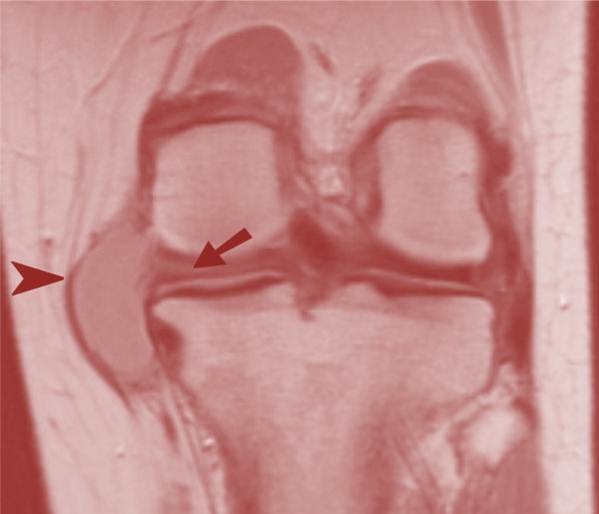Knee Meniscus Tears associated with Meniscal Cysts
In some patients with knee pain, cysts (fluid filled areas) can be seen near the knee meniscus (see arrows on MRI image of the knee above). What is a knee meniscus? This is the spacer in the knee that helps absorb shock and control knee movement. Sometimes extra fluid accumulates due to swelling and this can show up as a cyst on MRI of the knee. In a new study, these cysts appear to be associated with meniscus tears as seen on knee arthroscopy, even when the tear wasn’t obvious on MRI. These areas are often called parameniscal cysts. While any meniscus tear seen these days needs to be taken with a grain of salt (meaning the knee meniscus tear may not be associated with the patient’s pain), this study is helpful, as we often see patients with many different knee problems on MRI. Our challenge then becomes, where exactly do you place stem cells to try and assist in the repair of these damaged tissues that are causing pain? We don’t blindly inject stem cells into a knee, but understand that exact placement of stem cells in a knee will work better than just getting the cells inside the knee joint. These cysts may be a big help or clue in identifying meniscus tissue that’s in trouble and needs our help. As always, once a knee meniscus tear is identified, cutting out pieces of the meniscus isn’t the answer and based on the published research, this surgery will just more quickly advance the development of knee arthritis.

NOTE: This blog post provides general information to help the reader better understand regenerative medicine, musculoskeletal health, and related subjects. All content provided in this blog, website, or any linked materials, including text, graphics, images, patient profiles, outcomes, and information, are not intended and should not be considered or used as a substitute for medical advice, diagnosis, or treatment. Please always consult with a professional and certified healthcare provider to discuss if a treatment is right for you.

